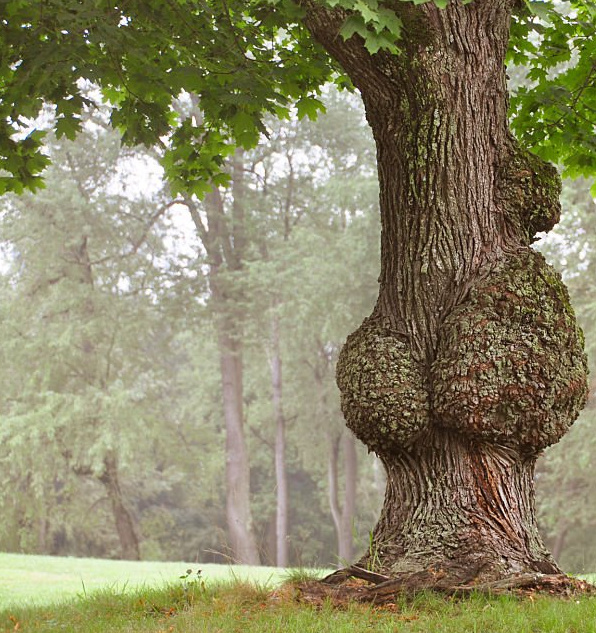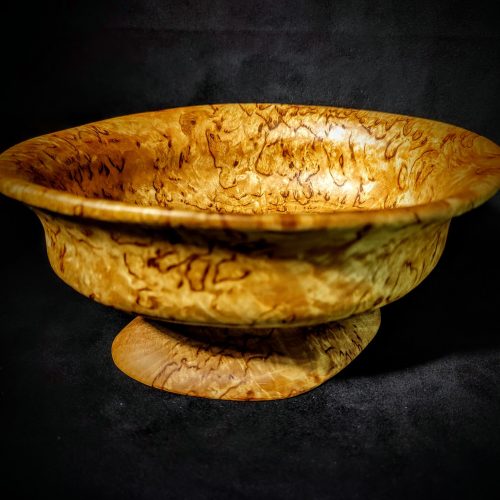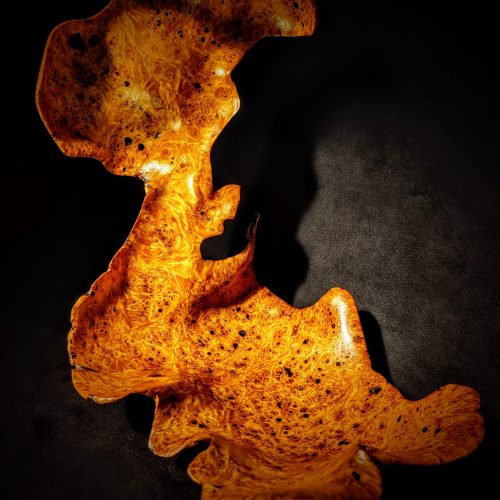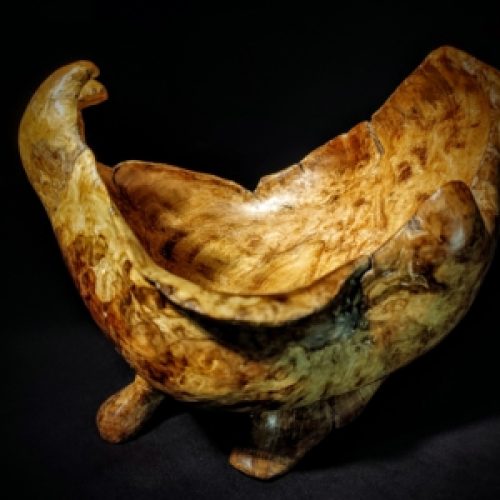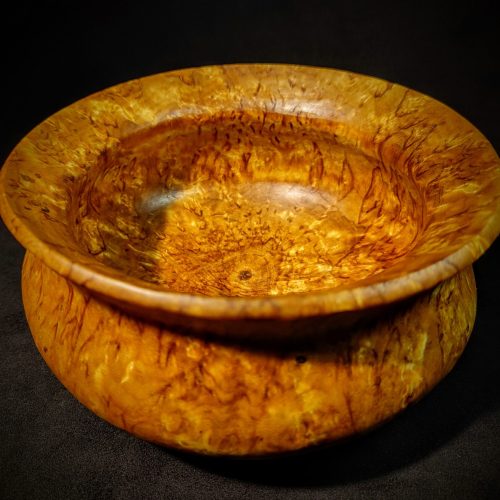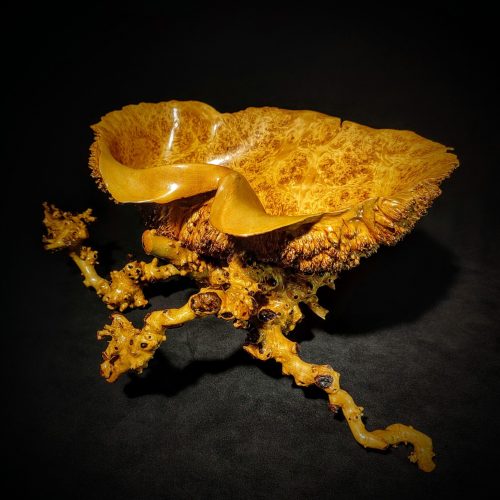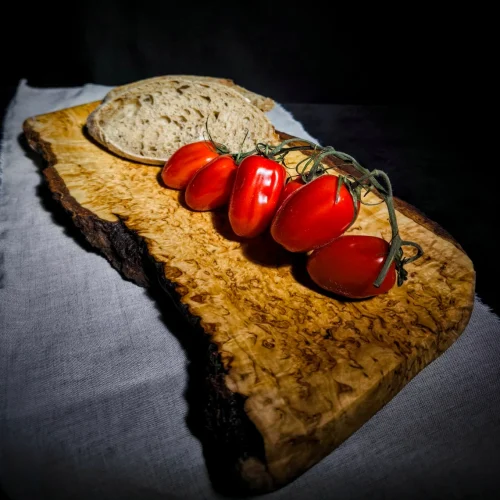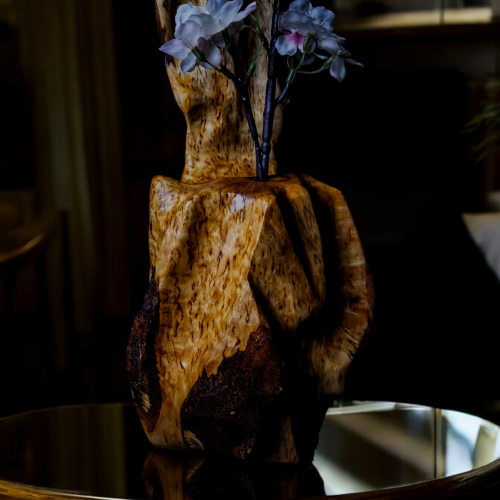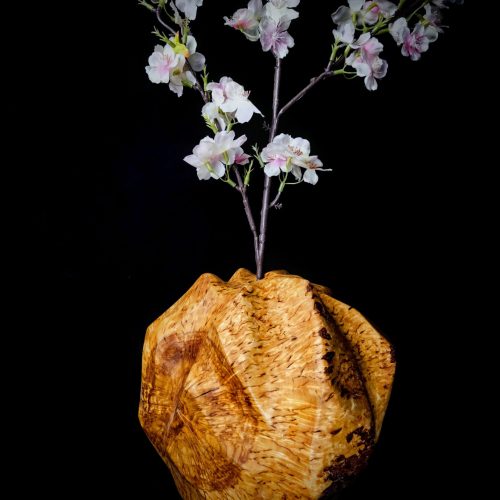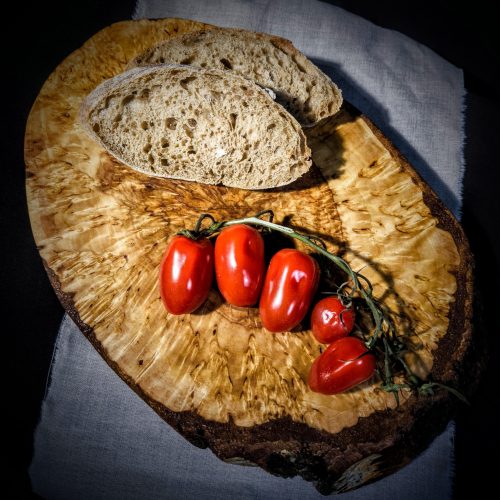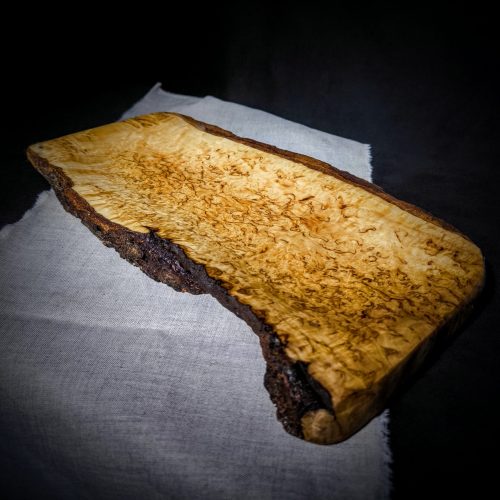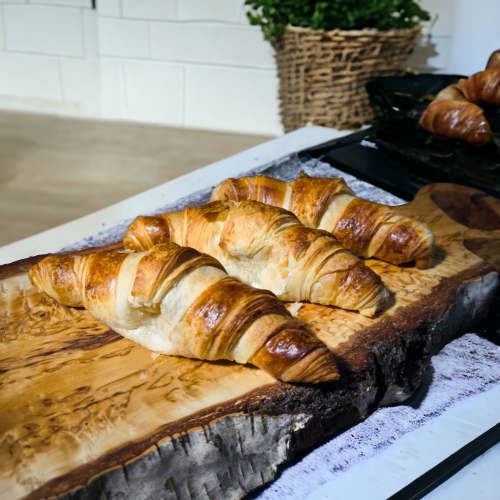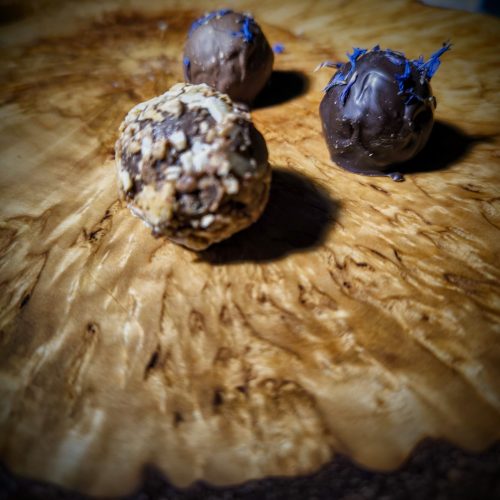Chances are, you’ve come across a burl on a tree, even if you weren’t familiar with the term. A burl is a conspicuous, knotty growth found on tree trunks or branches, and contrary to common misconceptions, it doesn’t harm the tree. In fact, these formations are highly prized by woodworkers due to their captivating patterns.
This article delves into the world of burl trees, exploring what constitutes a burl, its composition, the process of its formation, the types of trees more inclined to develop burls, and guidelines on what actions to take (or avoid) if you discover a burl on one of your trees.
What is Burl Wood?
A burl is a peculiar accumulation of tree cells known as callus tissue, exhibiting unique and exotic wood characteristics.
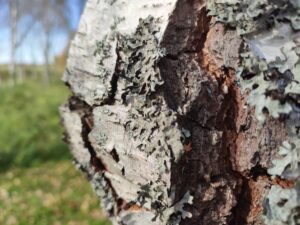 Typically, callus tissue forms in response to environmental injuries like pruning cuts, diseases, or insect damage. In forest environments, it often emerges due to storm damage, either eroding soil away or depositing more around the tree’s trunk. An illustrative instance of callus is the tissue that envelops the edges of a well-executed pruning cut to seal the wound effectively.
Typically, callus tissue forms in response to environmental injuries like pruning cuts, diseases, or insect damage. In forest environments, it often emerges due to storm damage, either eroding soil away or depositing more around the tree’s trunk. An illustrative instance of callus is the tissue that envelops the edges of a well-executed pruning cut to seal the wound effectively.
Burls develop similarly as a protective response, but they distinguish themselves by being found around tree trunk bases or where branches have broken off. Additionally, they manifest in underground tree tissue, known as lignotubers. Notably, burls do not adhere to the same regulatory mechanisms as callus growth, leading to their growth into rare and bizarre shapes.
The wood derived from burls is highly coveted for its exotic and unique qualities, making it a sought-after material in the realm of rare woods. The distinct growth patterns and irregularities contribute to the allure of these burls, making them a prized source of extraordinary and uncommon wood for various artisanal and woodworking purposes.
What is inside a burl?
Embrace the allure of the extraordinary, for within the lumpy, twisted, and irregular formations on tree bark lies nature’s masterpiece – the burl. Rather than being repelled, marvel at burls as living equivalents of mineral geodes, with a rough exterior concealing enchanting wood within.
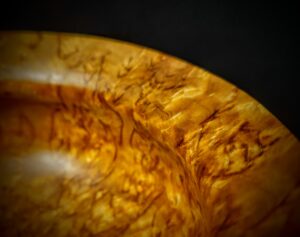 When you dare to cut open a burl, a world of unique wooden artistry is revealed. Just like sawn lumber, varying cuts expose different wood grain patterns, yet the complexity and unpredictability of a burl’s figuring surpass the ordinary. These one-of-a-kind growths, born from the tree’s need for protection, manifest winding, folded, and compressed patterns as they encase unsprouted bud tissue.
When you dare to cut open a burl, a world of unique wooden artistry is revealed. Just like sawn lumber, varying cuts expose different wood grain patterns, yet the complexity and unpredictability of a burl’s figuring surpass the ordinary. These one-of-a-kind growths, born from the tree’s need for protection, manifest winding, folded, and compressed patterns as they encase unsprouted bud tissue.
Dive deeper, and you may discover mineral deposits or interior bark ridges, capturing tales of flooded soil or eroded wood areas within the burl’s embrace. As burls mature, evolving into heartwood, they become the most coveted treasures.
Unlock the extraordinary potential of burls and consider them not just as nature’s resilience but as a source of truly unique, wooden gifts. Crafted by time and shaped by necessity, these living geodes offer an unparalleled journey into the world of bespoke woodcraft, making them ideal for those seeking distinctive and meaningful presents.
How valuable is burl wood?
Burl wood is highly valued in the woodworking and furniture industries for its unique and visually striking patterns. Burl wood is not a specific type of wood but rather an abnormal growth found on various tree species. It results from a tree undergoing stress, injury, or some type of infection, leading to the formation of a burl, which is a deformed growth on the trunk or branch.
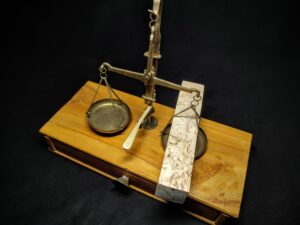 The value of burl wood is determined by several factors:
The value of burl wood is determined by several factors:
Species: Different tree species produce burls with varying patterns and characteristics. Some species, such as redwood, walnut, maple, and oak, are particularly sought after for their burl wood.
Size and Shape: Larger burls are generally more valuable, as they can yield more substantial pieces of wood. The shape of the burl also plays a role, with more symmetrical and aesthetically pleasing patterns often fetching higher prices.
Wood Quality: The quality of the wood, including its color, figure, and grain patterns, influences its value. Highly figured burl wood with intricate patterns is more desirable.
Rarity: Burl wood from rare or hard-to-find tree species is often more valuable due to its scarcity.
Processing and Finish: The way the burl wood is processed and finished also affects its value. Well-prepared and finished pieces can command higher prices.
Market Demand: Like any commodity, the value of burl wood is influenced by market demand. If there is a high demand for burl wood in the market, prices may rise.
Burl wood is commonly used in crafting high-end furniture, decorative items, instrument making (such as guitars and woodwind instruments), and fine woodworking. Craftsmen and artisans appreciate burl wood for its unique and unpredictable patterns, making each piece one-of-a-kind.
Keep in mind that the value of burl wood can vary widely, and it’s advisable to consult with experts or appraisers in the woodworking industry to get a more accurate assessment based on specific characteristics and market conditions.
Burl Wood Prices
Burl wood prices vary significantly based on factors such as tree species, size, quality, and the intricacy of the burl pattern. Rare and highly figured burls, such as those from redwood and walnut, can command premium prices. Smaller, less intricate burls, like those from oak or maple, are typically more affordable. Prices can range from $50 per pound for common burls to thousand dollars per pound for rare, high-quality specimens. Additionally, processed burl wood slabs and finished products, such as bowls or furniture, are priced higher due to the craftsmanship involved. Collectors and woodworkers alike value burl wood for its unique beauty and versatility.
| Common Burl Species | Price Range (Depending on Size and Grain) |
| Cherry Burl | $98.00 – $4,100.00 |
| Oak Burl | $95.00 – $2,795.00 |
| Elm Burl | $75.00 – $1,550.00 |
| Walnut Burl | $390.00 – $6,953.00 |
| Maple Burl | $95.00 – $2,795.00 |
| Ash Burl | $329.00 – $1,032.00 |
Type of Burl Woods
Burl woods come from various tree species, each offering unique patterns and characteristics. Popular types include redwood, maple, walnut, and oak burls. Redwood burls are known for their deep, rich colors and intricate grain patterns. Maple burls display beautiful swirling figures, while walnut burls are prized for their dark, elegant hues. Oak burls feature striking, eye-catching designs. Each type of burl wood is valued for its distinct appearance and is used in fine woodworking, furniture making, and decorative items.
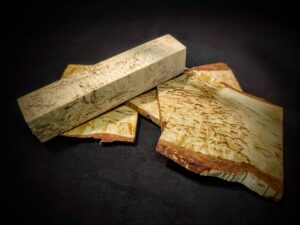
Karelian Birch, Curly Birch, Masur Birch
Discover the timeless beauty of Karelian Birch wood at Curlybirchwood. Explore a stunning selection of wood blocks, blanks, and branches, showcasing the unique curly patterns that make Karelian Birch renowned. Each piece is crafted with precision, reflecting the natural elegance of this exceptional wood. Visit the site to bring the warmth of Karelian Birch into your creations.
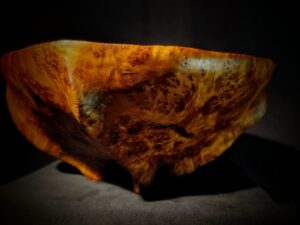
Redwood Burl
Redwood, a towering giant of the coastal regions, boasts enduring strength and beauty. Prized for its rich red hue and unique grain, it graces outdoor structures and fine furniture alike.
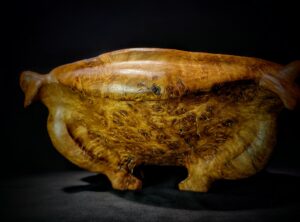
Oak Burl
Oak Burl Wood, a masterpiece of nature, captivates with its intricate swirls and mesmerizing patterns. Each piece tells a unique story of time and growth, showcasing the tree's resilience. Elevate your space with the timeless beauty and organic allure of Oak Burl Wood.
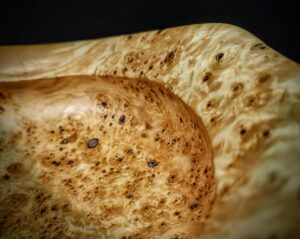
Maple Burl
Maple Burl Wood, a rare and exquisite material, showcases nature's artistic brilliance. With its intricate swirling patterns and rich tones, each piece is a unique masterpiece. Crafted into furniture or decor, it adds unparalleled elegance, making a bold statement in any space.
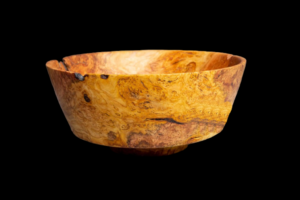
Cherry burl
Cherry burl, a rare and exquisite wood, boasts swirling patterns and rich hues. Its unique grain adds unparalleled character to artisanal furniture and decor, making each piece truly extraordinary.
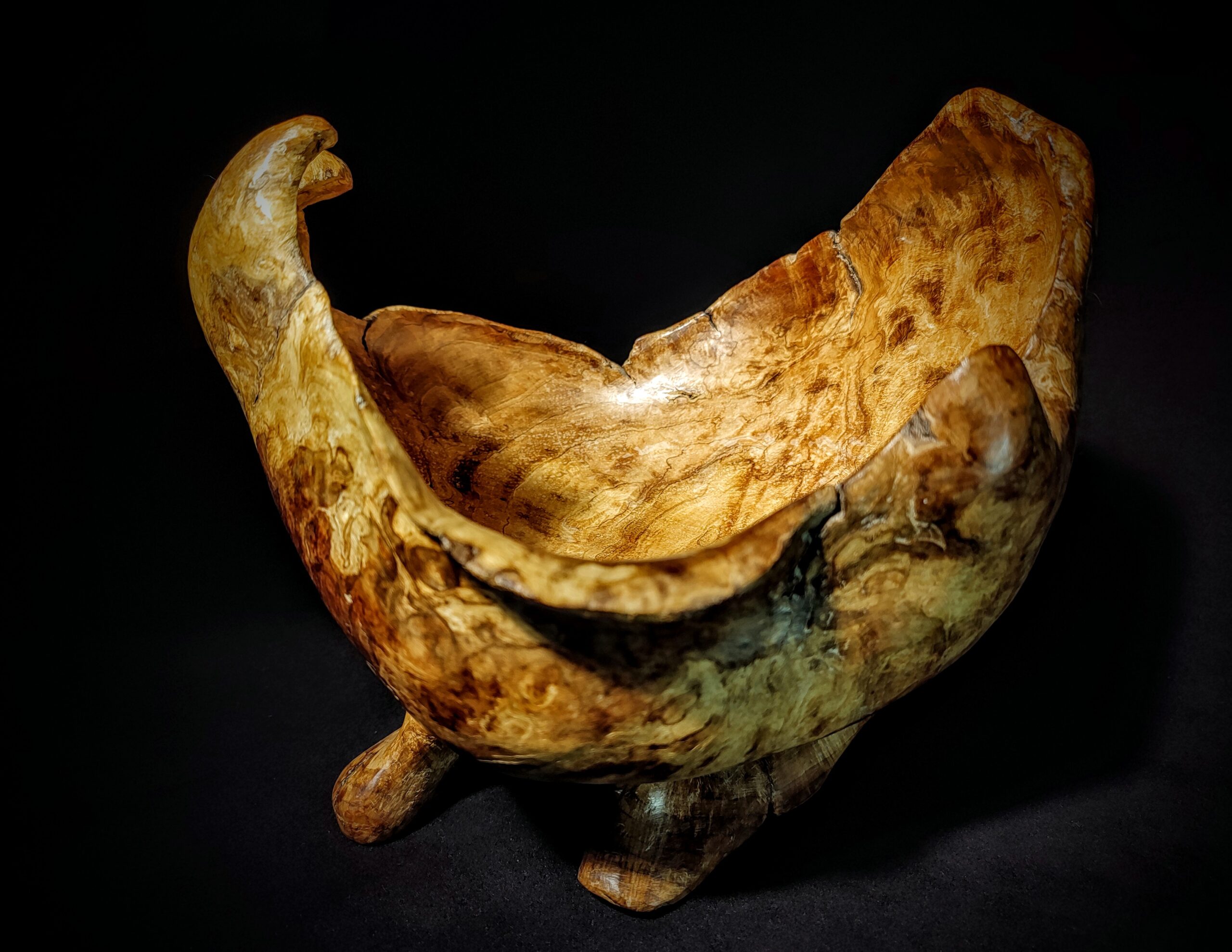
Walnut Burl
Walnut Burl, a natural marvel, showcases intricate swirling patterns and rich hues, adding a touch of timeless elegance to furniture and decor. Its unique beauty stands as a testament to nature's artistry.
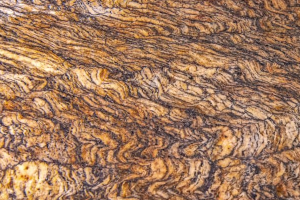
Buckeye Burl
Buckeye Burl, a rare wood prized for its exquisite grain patterns, captivates with unique swirls and hues. Sourced from the Buckeye tree, this exceptional material adds a touch of nature's artistry to fine craftsmanship.

Amboyna Burl
Discover the unparalleled beauty of Amboyna Burl, sourced from the Pterocarpus indicus tree in Southeast Asia. Renowned for its rare and intricate grain patterns, this reddish-brown burl wood adds a touch of opulence to fine craftsmanship. Easy to work with yet durable, Amboyna Burl finds its place in high-end furniture, luxury car interiors, and unique artisanal creations. Elevate your designs with the prestige of Amboyna Burl's warmth and exclusivity.
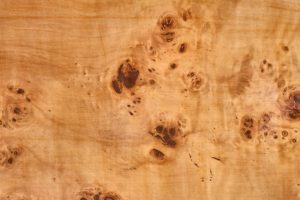
Poplar Burl
Explore the beauty of poplar burl wood with its intricate swirls and unique patterns. Prized for fine woodworking, furniture, and decorative crafts, this rare material adds a touch of luxury and uniqueness to your creations.
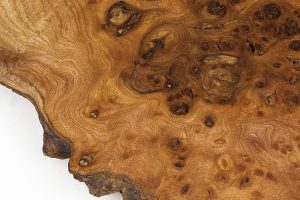
Elm Burl
Discover the allure of elm burl, a rare wood renowned for its unique swirling grain pattern and warm hues. Uncover the story behind this exquisite material, its resilience, and its transformation into fine furniture, decorative accents, and luxury car interiors. Elm burl is nature's artistry, adding elegance and sophistication to diverse designs. Immerse yourself in the timeless beauty of this rare wood.
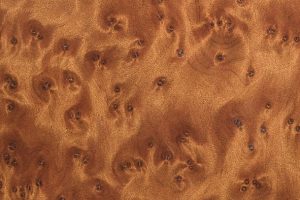
Thuya Burl
Thuya Burl, an extraordinary wood derived from Thuya tree burls, boasts unique grain patterns, coveted for fine craftsmanship, and artistic expressions.
Burl Wood Videos
Birch Tree Burl
Customer reviews
Beautiful craftsmanship and materials. I’m very pleased.
I was very pleased with this simple but striking wooden egg. The darker markings provided depth. I will check this site to consider a future purchase.
Love the craftsmanship, wood and size of this pendant. A perfect purchase all round. Make some more with different designs, please.
Beautiful, thank you so much
These are beautiful and unique!

